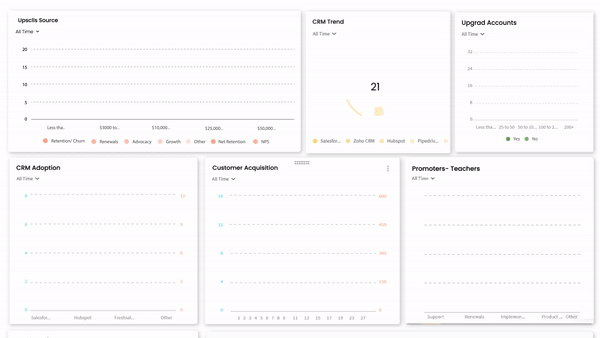Brand Experience
A Definitive Guide to Market Research Analysis & Why It is Important
Article written by Shreekumar Nair
Love to delight customers. Passionate about automobiles and a budding musician!
14 min read
23 December 2024

Market Research Analysis – the most commonly used term of the decade.
Have you ever launched a product and heard crickets? Or maybe you’ve spent a fortune on marketing, only to realize you’re targeting the wrong audience? We’ve all been there. But what if I told you there’s a way to avoid these costly mistakes? That’s right, the secret sauce to business success isn’t just about having a great product or a massive marketing budget. It’s about understanding your market inside out.
Welcome to the world of market research analysis. In this guide, we’ll dive deep into the nuts and bolts of market research and uncover why it’s the cornerstone of any successful business strategy.
So, What Is Market Research Analysis?
Market research analysis is the process of interpreting and evaluating data collected about a market, product, or service. It delves deep into understanding customer preferences, market trends, competitive landscape, and potential areas of growth. Businesses can make informed decisions, identify opportunities, and mitigate risks by systematically analyzing this data.
Why Do Market Research?
Market research is the beacon in the business world, guiding enterprises towards success. But why is it indispensable?
- Know Your Audience: Dive deep into customer preferences and behaviors to tailor your offerings.
- Spot Opportunities: Identify untapped market segments or innovative services before competitors.
- Reduce Risks: Anticipate challenges and devise strategies to tackle them head-on.
- Stay Competitive: Understand how you measure up against rivals and refine your approach.
- Make Data-Driven Decisions: Base your strategies on concrete data, not just gut feelings.

5 Key Components of Market Research Analysis
- Data Collection: Gathering relevant information through surveys, interviews, focus groups, and other methods.
- Data Interpretation: Understanding the patterns, behaviors, and trends from the collected data.
- Competitive Analysis: Evaluating the strengths and weaknesses of competitors to identify market gaps.
- Predictive Analysis: Forecasting future market trends based on historical and current data.
- Strategic Recommendations: Offering actionable insights to drive business growth.
In essence, market research analysis is the compass that guides businesses in the right direction. It’s not just about collecting data; it’s about transforming that data into actionable insights.
When it comes to market research, the right tools can make all the difference. Surveys stand out as a top choice, and among the best in the game is SurveySparrow. Dive into their specialized market research surveys and kickstart your journey with a free sign-up today!
A personalized walkthrough by our experts. No strings attached!
Diving into Market Research: Primary vs. Secondary
Primary Market Research
When you want to be at the heart of the action, primary market research is your go-to. It’s hands-on, allowing you to immerse yourself directly in the research process.
Some popular primary research techniques include:
- Interactive Sessions: Engaging with a select group to gather diverse opinions.
- One-on-One Chats: Personal conversations that delve deep into individual perspectives.
- Real-time Observations: Studying behaviors and actions as they unfold.
Through these techniques, you can gather:
- Qualitative Insights: Rich, descriptive data that paints a picture beyond numbers. Think of sentiments, feelings, and personal preferences often derived from interactive sessions and personal chats.
- Quantitative Metrics: Data you can measure and represent numerically, such as website traffic or user engagement metrics, typically visualized using graphs and charts.
Secondary Market Research
Secondary market research is like tapping into a treasure trove of existing knowledge. It’s data that’s already out there, making it more wallet-friendly and less time-consuming.
Some valuable secondary data sources include:
- Business Overviews: Reports curated by businesses about their own trajectory (e.g., corporate websites, financial portals).
- Sector Snapshots: Comprehensive data about entire sectors rather than individual entities (e.g., MarketWatch, IBISWorld).
- Expert Analyses: In-depth market evaluations by third-party experts on industry-specific topics (e.g., industry journals, renowned research firms).
- Public Records: Data amassed and shared by government bodies (e.g., World Bank Data, National Statistical Offices).
Secondary research offers a bird’s-eye view of the industry landscape and insights into market competitors. Always ensure the credibility of your sources to maintain the integrity of your findings.
Why Market Research Analysis is Important: 6 Ways It Can Ensure Success
Market research analysis can be a bit intimidating for a new business owner. But that is actually where you reap gold! We’ve listed six reasons why an effective marketing research strategy can help your business.
1) Focus on the customer’s point of view
Firstly, market research software provides you with the ability to identify your exact customer, their requirements, and expectations. This is done by collecting and analyzing data about the product, service, and market.
Secondly, you help your business to set up a new channel of communication with the customers via market research and feedback surveys. The data collected helps you to understand the exact customer needs so that you can customize your business and provide more value.

So how to start collecting customer feedback today? Sign up for a free trial with SurveySparrow and get started with powerful market research software + hundreds of free templates.
A personalized walkthrough by our experts. No strings attached!
How to collect customer feedback in 3 steps with SurveySparrow
- Create a contact list with all available contact details, use cases and data of their existing products and services.
- Create a short and crisp survey asking for feedback on your company. The user data can be added to your survey and further used for analysis.
- Share the survey through the right channels. One effective channel to directly collect feedback from a customer is the website. You can have a survey embedded in the website to measure the overall feedback from your customer.

2) Understand your competitors
It is extremely important to be familiar with your competitors’ products and services, as you can focus on your business and ensure it stands out.
A proper market research plan would help to benchmark yourself against the competition in terms of strategy and pricing, and ensure you have a leading advantage.
Now, crack competitor research with SurveySparrow: The best market research tool.
After the data collection, go to the Reports section and use the Comparison option to analyze it closely to explore any avenue that none of the competitors are exploring. This could be anything among:
- A product or service not currently offered by your competitors.
- A group of customers not currently catered for by your competitors.
- An aspect of your business that makes it stand out from the competition.
Once you can identify the unique proposition with the data to back it, you may have to figure out the most effective way of communicating it to your customers. A few of the most effective ways are:
- A creative marketing campaign.
- An advertisement that is memorable and attractive.
- An effective slogan.
Focusing on a unique selling proposition is vital, representing your product or service before a competitor’s.

3) Prepare a test-ground for success with market research analysis
Need help judging whether a new product or service will connect with your customer?
You can carry out business experiments by putting in marketing variations in front of the customer. To start as an experiment, hire freelancers. Once you are sure of your strategy, you can then set up your in-house team as well. It is a common practice for validating a large number of ideas in the field.
An effective market research analysis helps you with concepts and prototypes before you plan the full-scale implementation. Moreover, statistics can help you to decide the appropriate concepts and ideas that your audience would love.
Test marketing is also an inexpensive way of reducing risk by testing marketing strategies before you can scale them.
6 common examples of test marketing
- Products & Services: Selling products and services as a trial before a full product launch. For example, a Pizzeria that offers 20 different toppings in two locations each to decide which to launch on a nationwide scale.
- Customer Service: Customer service that starts as a pilot. For example, a salon that introduces a policy for no tips and replaces it with an incentive program for employees to earn bonuses for every satisfied customer.
- Customer Experience: Customer experience testing, such as a car service center that experiments with a WiFi lounge for owners to relax or work while the car is fixed.
- Pricing: Launching a service such as an internet service provider with a flat pricing structure in one city to measure the impact on demand.
- Promotion: Promotional experiments like a brand testing variations of an advertisement to connect with the audience. An example would be a soft drink brand in India, Paper Boat, which uses nostalgia as the key element in their commercials.
- Branding: Brand related research like redesigning the logo or the theme of a particular brand.
Market research analysis saves time and resources down the line, which is vital for a business to succeed. If you need a bigger, broader and well-profiled sample, you can get that through the SurveySparrow panel.
A personalized walkthrough by our experts. No strings attached!

4) Ensure your relevancy
To remain successful, a business needs to have a forecast, according to which they will anticipate and react for sustainability and growth.
In terms of staying relevant, a classic example of a marketing failure would be Nokia, a Finnish mobile manufacturing company. It was a global leader in cell phones and a company transforming feature-rich phones into fashionable accessories.
Nokia’s failure as a market leader can be attributed to a combination of 3 factors:
- Acquiring Symbian: This heavy investment in acquiring Symbian led to the obsolete platform being tied to Nokia. Considering the investments made, they had no alternative options apart from implementing it on their phones. However, as luck would have it, Apple released the original iPhone in 2007, which highlighted many of the shortcomings of Nokia’s OS.
- Emerging alternatives: Both Apple and Google were focusing more on creating a developer community that would encourage faster adoption by the masses. The result was the creation of an enormous amount of apps for these platforms that were easy to monetize.
- Failed to strategize: Nokia struggled to react to these sudden market changes. They started a new Maemo platform to fight the Apple and Google ecosystem. A new marketplace was being created called the Ovi Store. But it was a little too late. The Apple store and Google Play already had gathered millions of apps to cater to most needs of people.
Nokia was slow in execution, too. The Nokia N900 was a step ahead, but it was slow and not as polished as the iPhone had come to be.
The quickest way to stay relevant is to run a tracking survey. To elaborate, a market tracking survey is a simple, recurring survey where you can see the trend of the data segmented by time.

5) Double-check if you have a doubt. Accuracy rules!
Market research analysis helps businesses with limited resources to reduce their financial risks.
Clearly, it’s crucial for companies to ensure their data is spot-on. Especially now, when there’s an abundance of innovative solutions and algorithms at the fingertips of market researchers, all promising immediate insights.
Yet, without pairing these tools with market research rooted in social and behavioral science, one has to wonder about their true accuracy. After all, genuine insights require a blend of technology and human understanding.
An organization may have to look beyond those inexpensive software solutions to get accurate data to make the best decisions for their company. So, to boost your marketing research, ensure you incorporate the relevant market research methods in your annual business plan.

6) Expand your business with market research analysis
Market research is the best stepping stone for business owners who are looking to expand and scale up.
Research benefits by showcasing the relevance of the product, launch, and development. A few key factors that could help to expand your business are:
- Analyzing current and future markets.
- Strategize campaigns.
- Identify scope for improvement.
- Keep track of trends and future markets
- Ensure targets are realistic.
- Optimize results with the help of data collected.
Market research analysis plays a key role in predicting the evolution of the market, which in turn helps for a successful business expansion and growth.
But reports say that even the biggest of unicorns have gone wrong with their market research analysis. One such example is Coca-Cola.
A Market Research Example Gone Wrong
It was 2004. Coca-Cola identified an opportunity for a new product, supposedly their biggest launch since Diet Coke.
Their target was 20 to 40-year-old men who liked the taste of Coke sans its calories and carbs (but not a fan of the bland taste or female-drink image of Diet Coke).
C2 was their new product targeting this demography. Essentially half regular Coke and half diet coke, C2 was hardly anyone’s favorite. Also, it was a massive sales disaster.
So what went wrong?
C2 found itself in an unpleasant situation at a time when the US market was ripe for a zero calorie drink which tasted good. Men wanted a full flavor with no calories – not half the calories. And C2 missed the spot!
Coca-Cola had allocated a huge $50 million marketing budget. C2 had a lot of marketing information pertaining to male drinking and diet preferences, and yet it bombed. How, you ask! By a market research survey and analysis that was skewed by irrelevant information.
Due to this, Coca-Cola missed out a very important part in the entire market research process, which is asking the right questions to the right audience. This lack of proper research resulted in a product that did not meet the business expectations, and caused an expenditure of $50 million dollars, and even more valuable time. Worldwide, sales by volume got only by 2% which suggested that C2 had cannibalized the sales of Coke and Diet Coke.

Wrapping Up
Understanding your target market is an extremely crucial step for effective market research analysis. Ensure that you ask the right questions to the right people, questions that identify what people like and dislike. And, just like SurveySparrow is here to make the process effortless.
Do in-depth market research analysis with SurveySparrow, today!
A personalized walkthrough by our experts. No strings attached!
Going back to our previous example – Coca-Cola learned its lesson eventually. A year later, Coca-Cola launched Coke Zero, a no-calorie, full-flavor product. Needless to say, Coke Zero was an instant success!
Start 14 Days free trial

Shreekumar Nair
Customer Success Manager at SurveySparrow
Related Articles

Customer Experience
10 Proven Ways to Increase Customer Loyalty and Drive Repeat Business
11 MINUTES
24 August 2018

Knowledge
The AI Revolution: Cryptocurrency's Extraordinary Journey into the Future
6 MINUTES
30 May 2023

Best Of
25 Employee Appreciation Ideas For 2024
14 MINUTES
8 March 2021

Best Of
Start, Stop and Continue Framework: Unleashing its Importance
6 MINUTES
14 June 2023
